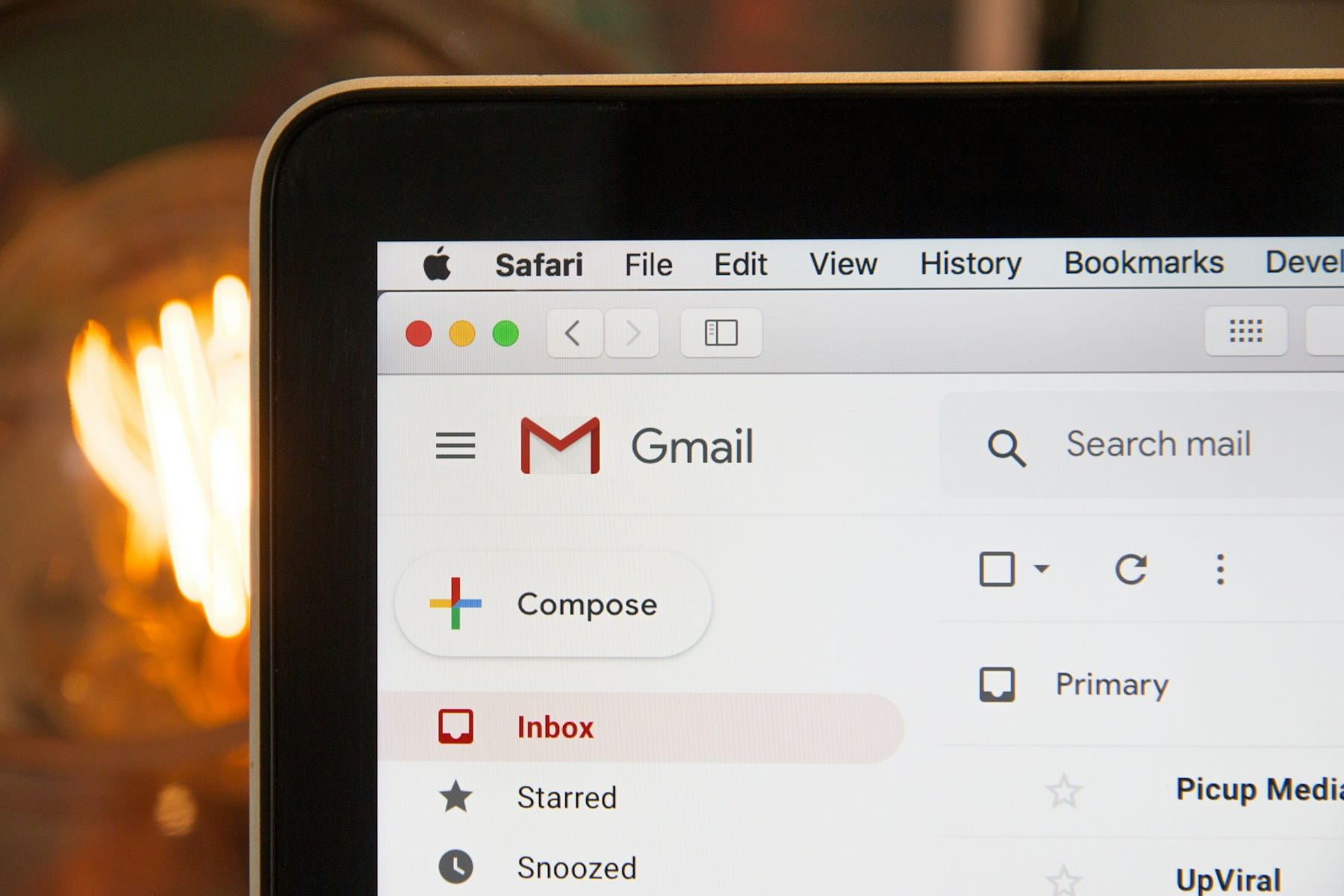Master Email Campaign Creation: The Complete SelfMailKit Guide
Building effective email campaigns requires understanding your audience, crafting relevant messages, and using the right tools to deliver them at scale.
Despite the growth of new communication channels, email marketing continues to deliver strong returns—studies show an average ROI of $36 per dollar spent. However, success depends on creating campaigns that provide genuine value to recipients while achieving your business objectives.
SelfMailKit provides the infrastructure and tools needed for modern email marketing, offering developers and marketers the flexibility to build campaigns that perform. This guide covers practical strategies for creating, managing, and optimizing email campaigns using SelfMailKit's platform.
We'll examine proven techniques, implementation details, and measurement strategies that help you build email campaigns that engage subscribers and support your business goals.
Table of contents
- Understanding email campaign fundamentals
- Essential qualities of high-performing campaigns
- Strategic impact on marketing success
- Executing effective email campaigns
- Advanced campaign strategies
- Implementation with SelfMailKit
- Measuring and optimizing performance
Understanding email campaign fundamentals
An email campaign consists of planned marketing messages sent to specific audience segments to achieve defined business goals. Unlike single notifications or transactional emails, campaigns require careful planning, audience targeting, and ongoing optimization based on performance data.
The difference between campaigns that engage and those that get ignored comes down to relevance, timing, and value. Effective campaigns focus on building relationships with subscribers by consistently delivering content that matters to them. Understanding email segmentation helps you deliver more relevant content to specific subscriber groups.
What defines an email campaign?
Today's email campaigns go beyond mass messaging to deliver targeted communications based on subscriber data and behavior. Essential elements include:
Strategic planning and objectives:
- Clear goals tied to business outcomes
- Defined target audiences and segmentation strategies
- Measurable success metrics and KPIs
- Integrated messaging across multiple touchpoints
- Coordinated timing and frequency optimization
Audience-centric design:
- Personalized content based on subscriber data
- Relevant messaging addressing specific pain points
- Value-driven communications prioritizing recipient benefit
- Responsive design optimized for all devices
- Accessibility considerations for inclusive reach
Performance optimization:
- Data-driven decision making based on analytics
- Continuous testing and refinement
- Integration with broader marketing initiatives
- Compliance with privacy regulations and best practices
- Scalable infrastructure supporting growth
Types of email campaigns
Understanding various campaign types helps align strategies with specific business objectives and audience expectations:
Welcome and onboarding series:
- New subscriber greetings establishing brand voice
- Product or service introductions
- Account setup guidance and tutorials
- Engagement-building content sequences
- Expectation setting for future communications
Promotional and sales campaigns:
- Product launches and announcements
- Seasonal promotions and holiday offers
- Limited-time deals and flash sales
- Exclusive subscriber benefits
- Cross-sell and upsell opportunities
Engagement and nurture campaigns:
- Educational content series
- Industry insights and thought leadership
- Customer success stories and case studies
- Community building initiatives
- Re-engagement campaigns for inactive subscribers
Lifecycle and behavioral campaigns:
- Abandoned cart recovery sequences
- Post-purchase follow-ups and reviews
- Milestone celebrations and anniversaries
- Renewal and retention campaigns
- Win-back initiatives for lapsed customers
For detailed guidance on building email sequences, see our email funnels complete guide which covers automation strategies.
Essential qualities of high-performing campaigns
Successful email campaigns share specific characteristics that help them achieve better engagement and conversion rates. Understanding these elements helps you create more effective campaigns.
Compelling subject lines that drive opens
Subject lines determine whether recipients open your emails. Good subject lines clearly communicate value while creating enough interest to encourage opens, without resorting to spam tactics.
Subject line best practices:
- Keep length between 30-50 characters for optimal mobile display
- Use action-oriented language encouraging immediate engagement
- Personalize with recipient names or relevant details when appropriate
- Create urgency without resorting to misleading tactics
- Test variations to identify resonating approaches
Proven subject line formulas:
- Questions that pique curiosity: "Ready to transform your email marketing?"
- Numbers and lists: "7 proven strategies for email success"
- Personalization: "[Name], your exclusive offer inside"
- Urgency with value: "24 hours left: Save 30% on premium features"
- Benefit-focused: "Boost your open rates by 50% with this simple trick"
For more strategies on writing effective subject lines, see our guide on best email subject lines.
Clear, scannable content design
Modern readers scan rather than read emails thoroughly, making content structure and visual hierarchy critical for message comprehension and action-taking.
Content optimization strategies:
- Use short paragraphs with 2-3 sentences maximum
- Implement bullet points for easy scanning
- Bold key information and benefits
- Include adequate white space between sections
- Place primary CTAs above the fold
Writing techniques for engagement:
- Lead with value propositions addressing recipient needs
- Use conversational tone matching brand personality
- Focus on benefits rather than features
- Include social proof and testimonials
- End with clear next steps
Mobile-first responsive design
With over 60% of emails opened on mobile devices, campaigns must deliver flawless experiences across all screen sizes and email clients. Mobile optimization directly impacts engagement rates and conversion success.
Mobile optimization essentials:
- Single-column layouts adapting to narrow screens
- Touch-friendly buttons sized at minimum 44x44 pixels
- Readable font sizes requiring no pinch-to-zoom
- Compressed images for fast loading
- Fallback formatting for limited CSS support
Cross-client compatibility:
- Test across major email clients (Gmail, Outlook, Apple Mail)
- Use inline CSS for consistent rendering
- Provide plain text alternatives
- Verify dark mode appearance
- Ensure accessibility compliance
Learn more about email design in our transactional email design best practices guide.
Strategic personalization and relevance
Personalization extends beyond inserting recipient names to encompass content, timing, and channel preferences based on behavioral data and stated interests.
Advanced personalization techniques:
- Dynamic content blocks based on user segments
- Behavioral triggers responding to actions
- Geographic customization for local relevance
- Purchase history integration for recommendations
- Preference centers allowing subscriber control
Relevance optimization:
- Segment audiences based on engagement patterns
- Tailor messaging to lifecycle stages
- Adjust frequency based on individual preferences
- Use predictive analytics for content selection
- Implement progressive profiling for data collection
Clear value propositions
Every email should clearly communicate what value it provides to the recipient. When subscribers immediately understand the benefit, they're more likely to engage with your content. Learn more about creating compelling content in our newsletter best practices guide.
Value communication strategies:
- Lead with primary benefits in opening sentences
- Use specific examples and concrete outcomes
- Quantify value with numbers and statistics
- Address pain points directly
- Differentiate from competitor offerings
Building trust through transparency:
- Set clear expectations for email frequency
- Honor unsubscribe requests immediately
- Provide easy preference management options
- Include company contact information
- Maintain consistent sender identities
Strategic impact on marketing success
Email campaigns play an important role in marketing strategies by providing direct communication with audiences who have opted in to receive your messages. Implementing double opt-in processes helps ensure you're building quality subscriber lists.
Direct customer relationships
Unlike social media or paid advertising dependent on platform algorithms, email provides direct access to engaged audiences who've explicitly opted into communications.
Relationship building advantages:
- Owned media channel independent of third-party platforms
- Consistent touchpoints throughout customer journeys
- Personalized messaging at scale
- Two-way communication opportunities
- Long-term relationship nurturing
Cost-effective scalability
Email marketing delivers exceptional ROI through minimal costs per contact combined with sophisticated targeting capabilities that maximize relevance and engagement.
Economic benefits:
- Low incremental costs for additional contacts
- Reduced dependency on paid advertising
- Automated workflows saving staff time
- Measurable results enabling optimization
- Compound returns through list growth
Data-driven insights
Campaign analytics provide invaluable insights into customer preferences, behaviors, and engagement patterns that inform broader business strategies.
Analytics applications:
- Content preferences guiding product development
- Engagement patterns informing optimal timing
- Conversion data supporting sales forecasts
- Segmentation insights improving targeting
- Cross-channel attribution understanding
Executing effective email campaigns
Successful campaign execution requires systematic approaches combining strategic planning with tactical implementation excellence.
1. Define and understand your audience
Effective campaigns begin with deep audience understanding that goes beyond basic demographics to encompass psychographics, behaviors, and preferences.
Audience research methods:
- Analyze existing customer data for patterns
- Conduct surveys understanding motivations
- Monitor social media conversations
- Review support tickets for common challenges
- Study competitor audiences for insights
Segmentation strategies:
- Demographics (age, location, industry)
- Behavioral patterns (purchase history, engagement)
- Psychographics (values, interests, lifestyle)
- Lifecycle stages (prospect, customer, advocate)
- Engagement levels (active, at-risk, inactive)
CMO Megan Gianvito of Adapting Social emphasizes: "Not everyone will be interested in the same products, services, or topics. By hyper-segmenting audiences, emails become more personalized, more relevant and therefore more engaged with—delivering a higher ROI on email channels."
2. Establish clear campaign objectives
Well-defined goals provide direction for content creation, design decisions, and performance measurement throughout campaign lifecycles.
Goal-setting framework:
- Align with broader business objectives
- Create specific, measurable targets
- Set realistic timelines for achievement
- Identify required resources and constraints
- Establish success metrics and benchmarks
Common campaign objectives:
- Increase brand awareness and reach
- Generate qualified leads for sales teams
- Drive traffic to specific landing pages
- Boost product or service sales
- Improve customer retention rates
3. Select appropriate campaign types
Different objectives require different campaign approaches—choosing the right type ensures message-market fit and optimal results.
Campaign selection criteria:
- Audience lifecycle stage and readiness
- Available content and creative resources
- Technical capabilities and integrations
- Competitive landscape considerations
- Seasonal or timing factors
Multi-touch campaign planning:
- Map customer journeys identifying touchpoints
- Create content addressing each stage
- Design smooth transitions between messages
- Build in flexibility for personalization
- Plan follow-up sequences based on actions
For implementing sophisticated multi-touch campaigns, explore our email funnels complete guide strategies that scale personalized communications efficiently.
4. Craft compelling campaign content
Content quality ultimately determines campaign success—even perfect timing and segmentation cannot overcome weak messaging that fails to resonate.
Content development process:
- Start with audience pain points and desires
- Develop unique angles differentiating messages
- Create scannable formats for easy consumption
- Include clear calls-to-action throughout
- Edit ruthlessly for clarity and impact
For comprehensive content planning strategies, see our drip marketing guide which covers systematic content creation approaches.
Storytelling techniques:
- Use narrative arcs creating emotional connections
- Include customer success stories as social proof
- Share behind-the-scenes insights building trust
- Create cliffhangers encouraging continued engagement
- Maintain consistent voice across touchpoints
5. Optimize send timing
Timing significantly impacts open rates and engagement—sending when recipients are most likely to engage improves campaign performance dramatically.
Timing optimization strategies:
- Analyze historical engagement data by segment
- Consider time zones for geographic diversity
- Test different days and times systematically
- Account for industry-specific patterns
- Monitor competitor sending patterns
For detailed timing insights, explore our best time to send marketing emails guide which covers industry-specific recommendations.
Industry benchmarks suggest:
- B2B emails perform best Tuesday-Thursday
- B2C sees higher engagement on weekends
- Morning sends (10 AM) often outperform afternoon
- Avoid Mondays and Fridays when possible
- Consider recipient daily routines
Understanding email deliverability factors ensures your perfectly timed campaigns actually reach intended inboxes rather than spam folders.
Advanced campaign strategies
Sophisticated marketers leverage advanced techniques to maximize campaign effectiveness and create competitive advantages through superior execution.
Behavioral trigger automation
Automated campaigns responding to specific user actions deliver timely, relevant messages that feel personal rather than promotional.
Trigger campaign examples:
- Welcome series for new subscribers
- Abandoned cart recovery sequences
- Post-purchase follow-ups and upsells
- Re-engagement campaigns for inactive users
- Milestone celebrations and rewards
Implementation considerations:
- Map all relevant user actions and touchpoints
- Design appropriate response sequences
- Set optimal timing for each trigger
- Create fallback options for edge cases
- Monitor performance and adjust accordingly
Dynamic content personalization
Advanced personalization engines enable single campaigns to deliver unique experiences for each recipient based on comprehensive data profiles.
Dynamic content applications:
- Product recommendations based on browsing
- Location-specific offers and information
- Industry-relevant case studies and examples
- Personalized discount levels by segment
- Custom content based on engagement history
Multi-channel integration
Modern campaigns coordinate across email, SMS, push notifications, and other channels to create cohesive customer experiences.
Integration strategies:
- Maintain consistent messaging across channels
- Use channel preferences for optimization
- Coordinate timing for maximum impact
- Track cross-channel attribution
- Build unified customer profiles
AI-powered optimization
Machine learning algorithms analyze vast datasets to identify patterns and optimize campaigns automatically at scale.
AI applications in email marketing:
- Subject line optimization predictions
- Send time optimization by individual
- Content recommendations based on preferences
- Predictive segmentation for targeting
- Automated A/B testing and learning
Implementation with SelfMailKit
SelfMailKit provides comprehensive infrastructure and tools designed specifically for creating, managing, and optimizing high-performing email campaigns at any scale.
Campaign creation and management
Intuitive campaign builders combined with powerful APIs enable both marketing teams and developers to create sophisticated campaigns efficiently.
Campaign building features:
- Visual drag-and-drop editors for quick creation
- HTML/CSS access for complete customization
- Reusable template libraries and components
- Dynamic content insertion capabilities
- Multi-language support for global campaigns
Developer-friendly tools:
- RESTful APIs for programmatic campaign management
- Webhook integrations for real-time events
- SDKs for popular programming languages
- Version control and rollback capabilities
- Staging environments for safe testing
Advanced segmentation and targeting
Sophisticated segmentation engines enable precise audience targeting based on any combination of attributes, behaviors, and custom data.
Segmentation capabilities:
- Real-time behavioral segmentation
- Custom field support for unique attributes
- Compound segments with AND/OR logic
- Dynamic segments updating automatically
- Integration with external data sources
Targeting optimization:
- Predictive analytics for engagement likelihood
- Lookalike audiences based on best customers
- Suppression lists for compliance
- Frequency capping preventing fatigue
- Geographic and timezone targeting
Comprehensive analytics and insights
Deep analytics provide actionable insights for continuous improvement and data-driven decision making.
Analytics features:
- Real-time campaign performance dashboards
- Cohort analysis for lifecycle insights
- Revenue attribution tracking
- Heatmap visualization for engagement
- Custom report builders for specific KPIs
Advanced metrics tracking:
- Email client and device analytics
- Link-level click tracking with UTM support
- Conversion tracking with e-commerce integration
- List growth and churn analysis
- Competitive benchmarking data
Deliverability optimization
Built-in deliverability tools ensure campaigns reach inboxes consistently while maintaining sender reputation.
Deliverability features:
- Dedicated IP addresses for high-volume senders
- Automatic warm-up protocols for new IPs
- Real-time reputation monitoring
- Authentication setup (SPF, DKIM, DMARC)
- Feedback loop processing
Learn more about ensuring inbox placement in our guide on how to prevent emails from going to junk covering technical and content optimization strategies.
Scalable infrastructure
Enterprise-grade infrastructure ensures reliable delivery whether sending hundreds or millions of emails while maintaining performance and deliverability.
Infrastructure advantages:
- Global sending infrastructure for optimal delivery
- Automatic scaling handling traffic spikes
- 99.99% uptime SLA guarantee
- Real-time monitoring and alerting
- Comprehensive security and compliance
Measuring and optimizing performance
Continuous measurement and optimization transform good campaigns into great ones through systematic testing and refinement based on data insights.
Key performance indicators
Track metrics that directly correlate with business objectives rather than vanity metrics that don't impact bottom-line results.
Essential metrics to monitor:
- Delivery rate: Percentage successfully reaching servers
- Open rate: Engagement indicator for subject lines and timing
- Click-through rate: Content relevance and CTA effectiveness
- Conversion rate: Ultimate success metric for campaigns
- ROI: Revenue generated versus campaign costs
Advanced analytics metrics:
- Engagement over time showing content lifespan
- Forward rates indicating content value
- Reply rates for two-way engagement
- List growth rate and sources
- Lifetime value by acquisition source
A/B testing methodologies
Systematic testing enables continuous improvement through data-driven insights rather than assumptions or opinions.
Testing best practices:
- Test single variables for clear insights
- Ensure statistical significance before decisions
- Document results for future reference
- Test across different segments
- Implement winning variations promptly
Elements to test:
- Subject lines and preheader text
- Send times and days
- Content length and format
- CTA placement and design
- Personalization levels
For comprehensive testing strategies, explore our email A/B testing guide covering statistical methodologies and implementation techniques.
Continuous improvement processes
Establish systematic approaches for ongoing optimization based on performance data and changing audience preferences.
Optimization workflow:
- Analyze campaign performance against benchmarks
- Identify underperforming elements or segments
- Develop hypotheses for improvement
- Design and execute tests
- Implement successful changes across campaigns
- Document learnings for team knowledge
Long-term optimization strategies:
- Regular audience surveys understanding preferences
- Competitive analysis identifying opportunities
- Technology evaluation for new capabilities
- Team training on emerging best practices
- Performance reviews with actionable insights
For advanced campaign strategies, consider exploring email remarketing techniques that help re-engage inactive subscribers.
Build better email campaigns with SelfMailKit
Creating effective email campaigns requires combining good strategy with reliable technology. Understanding your audience and crafting relevant content provides the foundation, while the right platform ensures your messages reach inboxes and drive results.
SelfMailKit offers the tools and infrastructure needed for modern email marketing. The platform includes campaign builders, segmentation capabilities, analytics, and deliverability features that help teams create and manage email campaigns effectively.
Whether you're sending your first campaign or managing millions of emails monthly, SelfMailKit provides the flexibility and reliability required for email marketing success. The platform's developer-friendly approach makes it easy to integrate with existing systems while maintaining the performance needed for growth.
Learn more about how SelfMailKit can support your email marketing needs with infrastructure designed for modern development teams.





